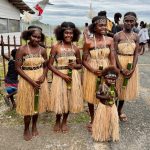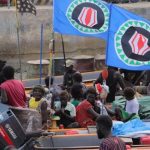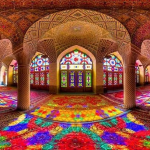While the island of Papua and its surrounding areas are filled with fascinating tribes, one of the most notable and prominent is the Dani tribe.
Famous for their warrior-like spirit and of course their penis-gourds, they are much more than just a draw for tourists. That becomes obvious when you go trekking with them in the highlands. But who exactly are the Dani, and what’s it really like to travel through their homeland?
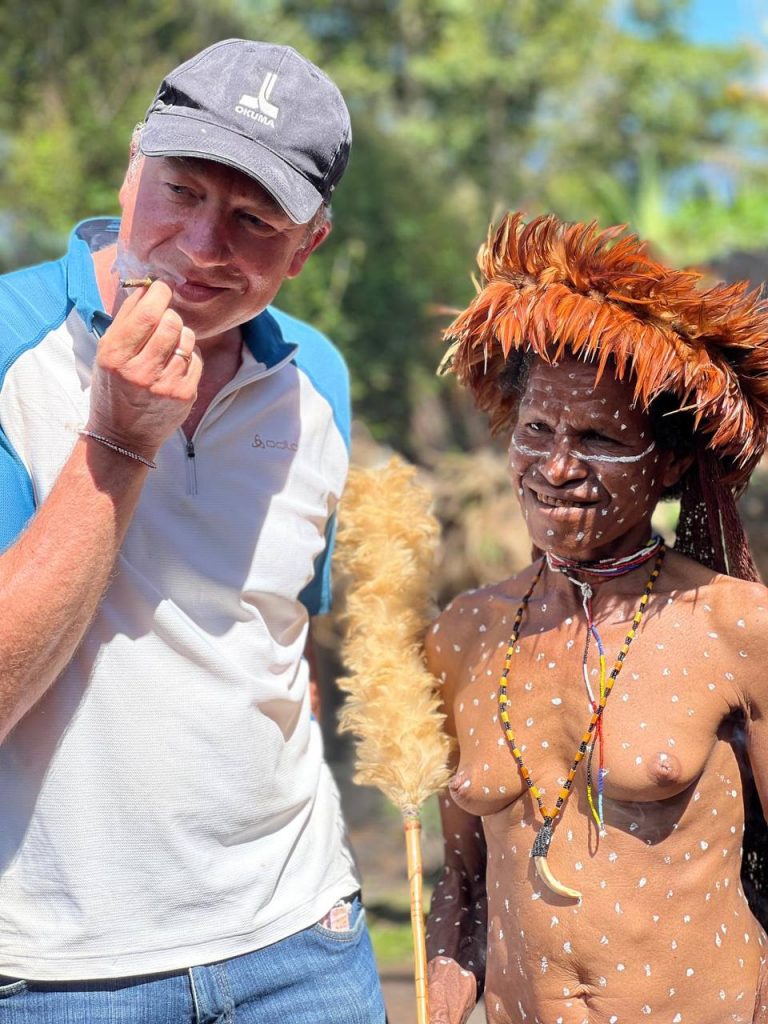
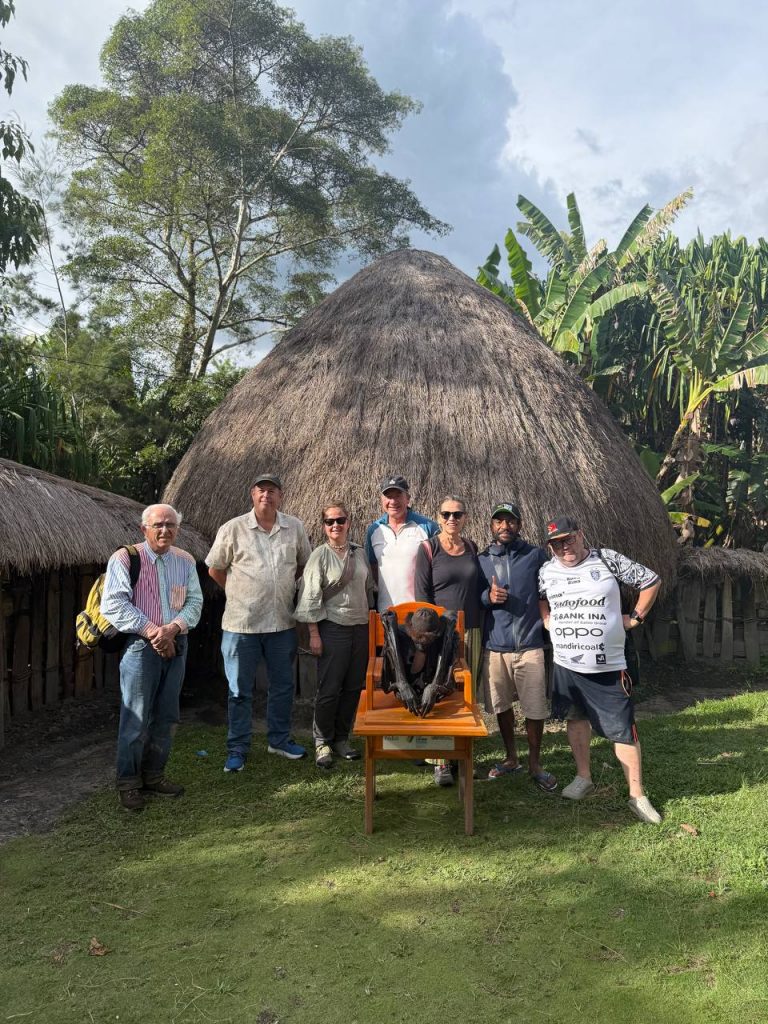
Who are the Dani people?
The Dani people are indigenous to the central highlands of West Papua, particularly around the Baliem Valley and Wamena. They’ve managed to maintain their traditional way of life largely untouched for centuries. While modernity is creeping in—slowly and unevenly—many Dani still live in what outsiders might consider the “old ways.”
They’re best known to the outside world for their striking appearance: the men often wear little more than the koteka, or penis-gourd, while the women wear grass skirts and carry goods in the noken, a kind of string bag hung from the forehead. But beyond the visuals, the Dani are a close-knit, agricultural society. They farm sweet potatoes, taro, and raise pigs, which serve as a kind of currency and are central to rituals and celebrations.
Despite colonial incursions, missionary campaigns, and now Indonesian occupation, the Dani have clung fiercely to their identity. They aren’t just surviving—they’re adapting, questioning, and resisting. Visit their villages, and you’ll meet elders who remember the first white people arriving, and young people who’ve never left the mountains but still know what Jakarta is.
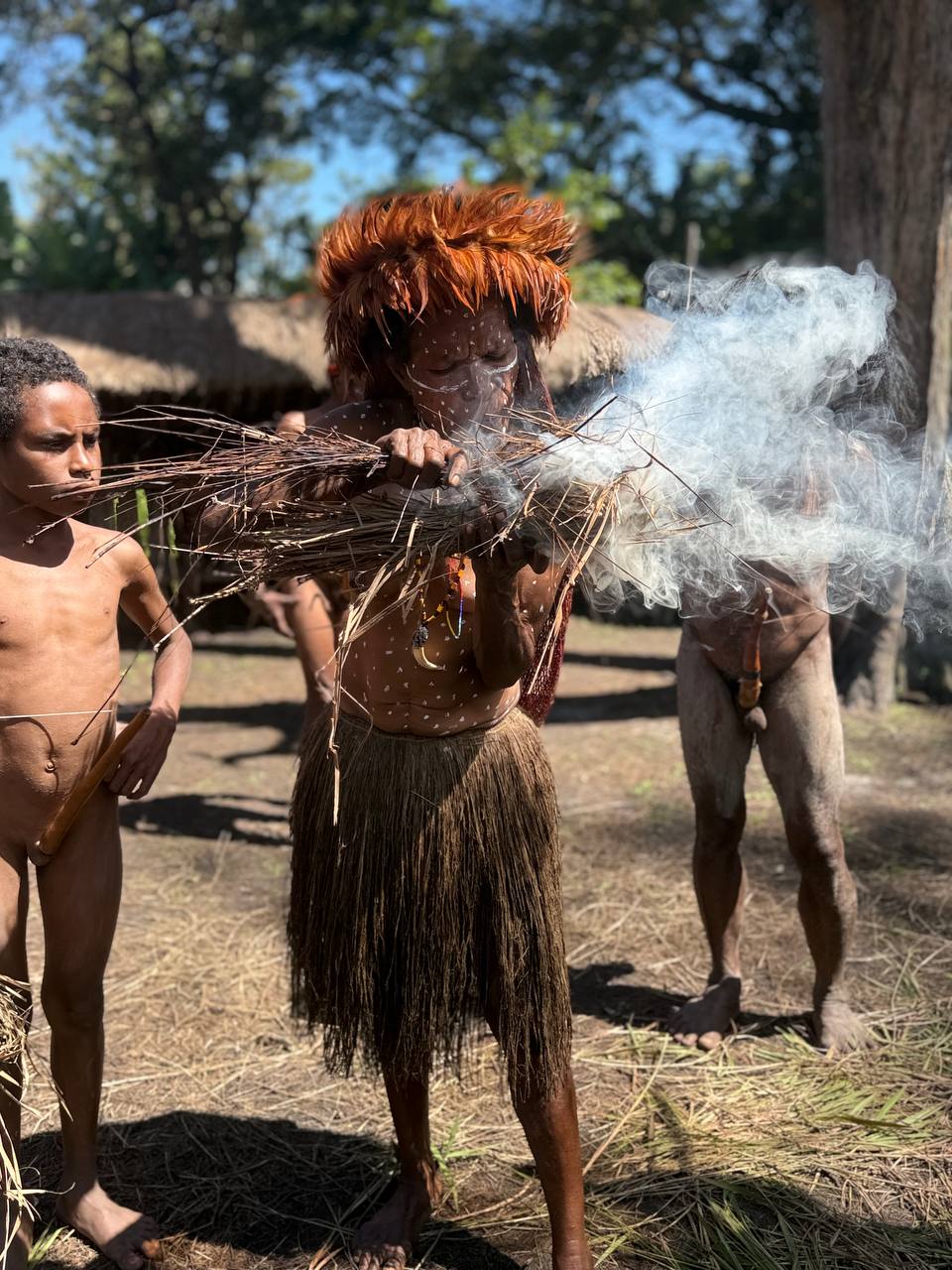
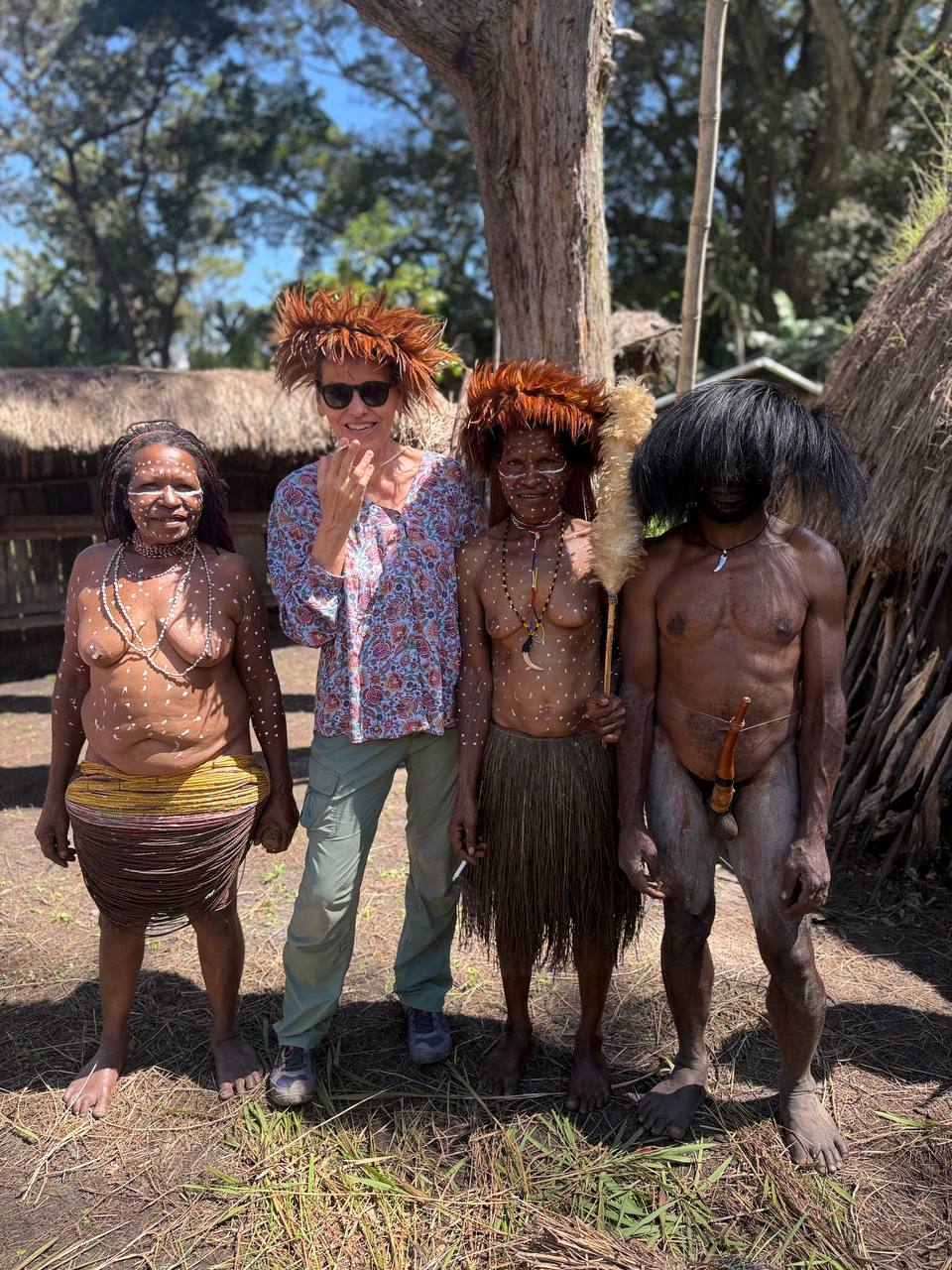
Dani Customs
The Dani are a people of rituals. One of the most shocking and sobering traditions is the practice of finger amputation. When a close family member dies—particularly a male—a female relative might have one of her fingers cut off. It’s a symbol of grief, loss, and sacrifice. While this tradition is becoming less common, you can still meet women with shortened or missing fingers, particularly in older generations.
Marriage here happens young. Girls can be married by their early teens, often in arrangements made between families. A man’s wealth is measured in pigs, and bride prices are paid accordingly.
The village itself is a tightly bound unit. The men live in separate huts from the women. Houses are small, round, and thatched, and yes—there is a lot of smoke. Don’t be surprised if you wake up coughing if you sleep in one. Fires are kept burning for warmth as the highlands get cold at night.



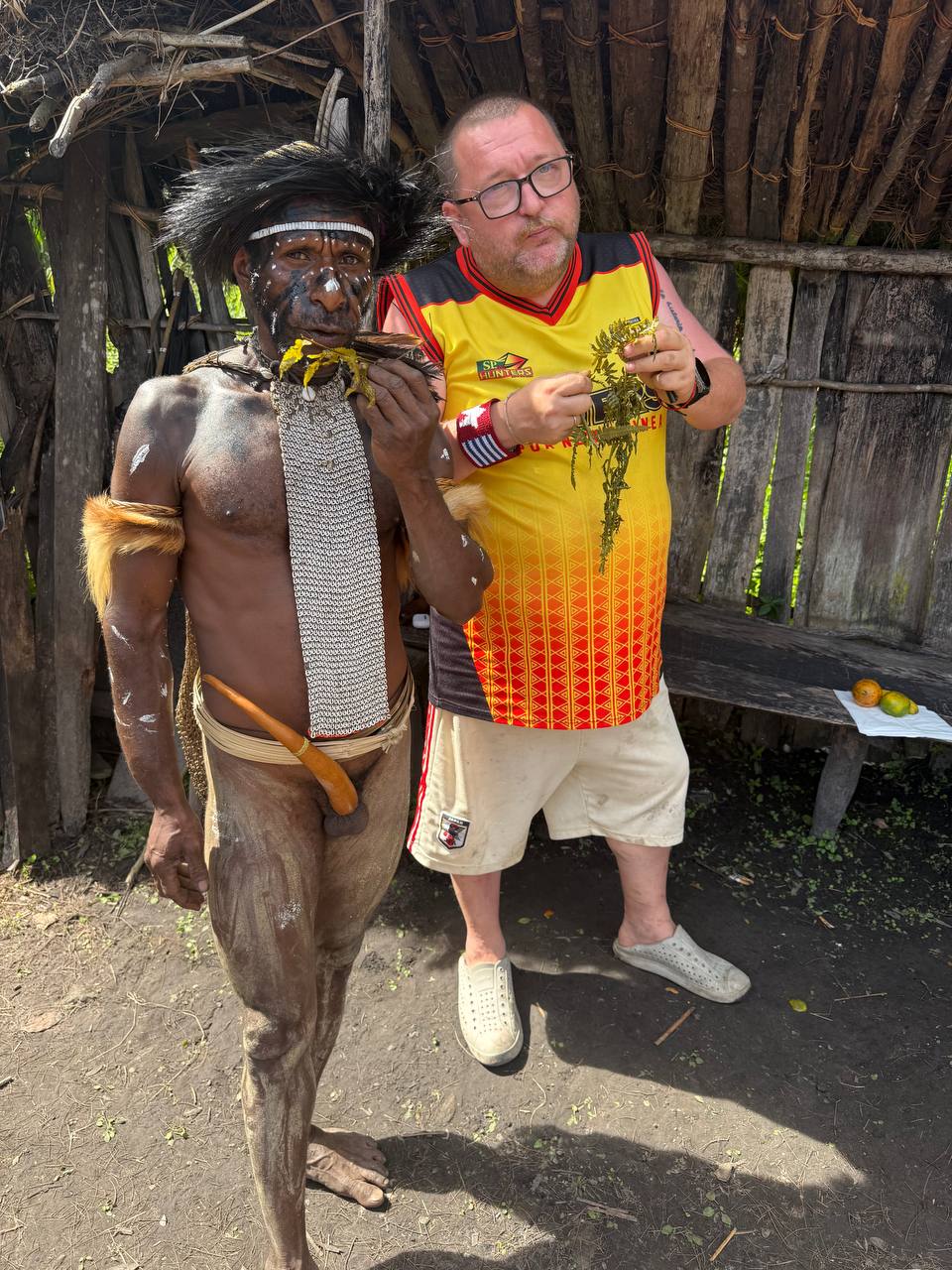

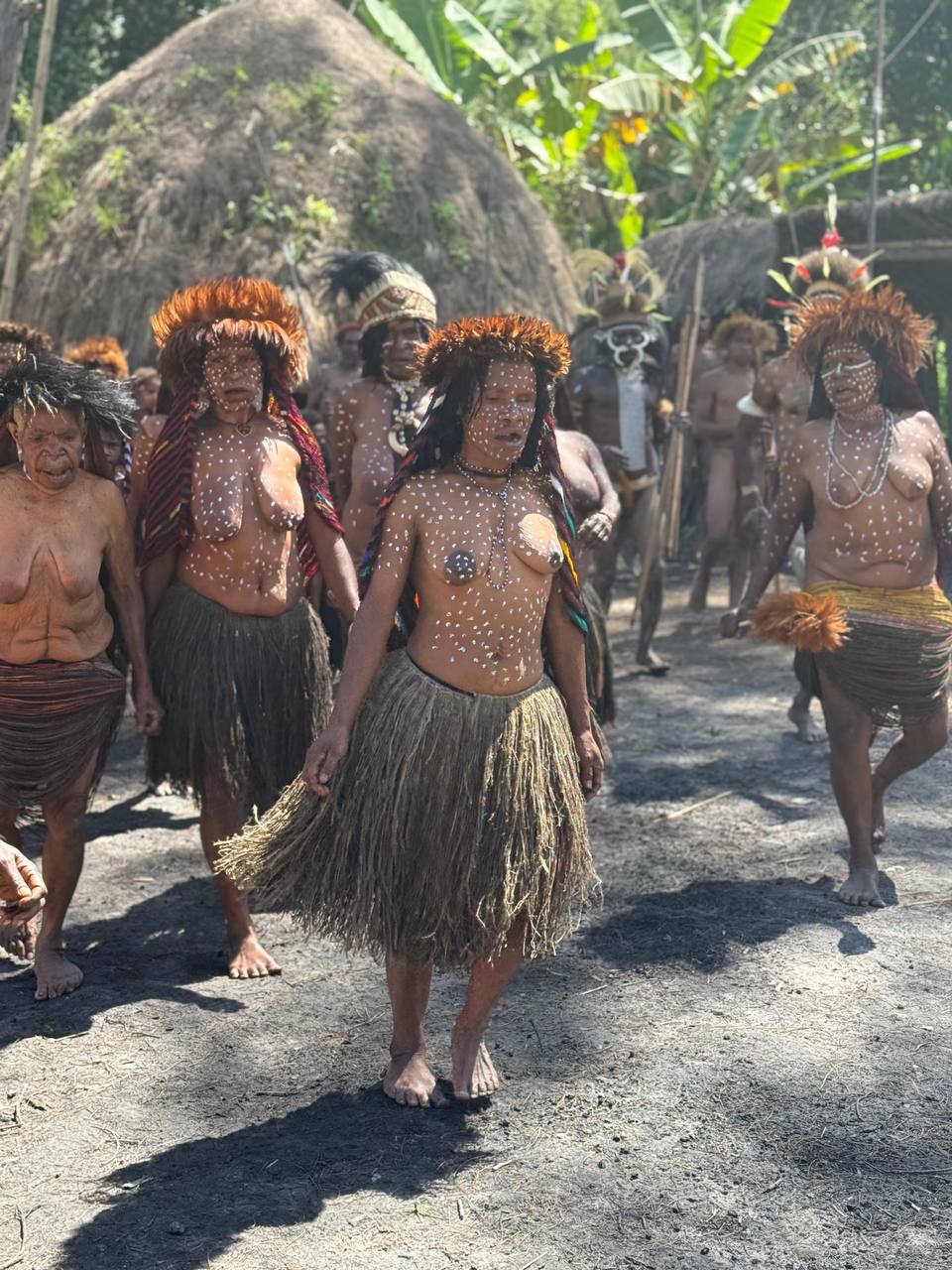

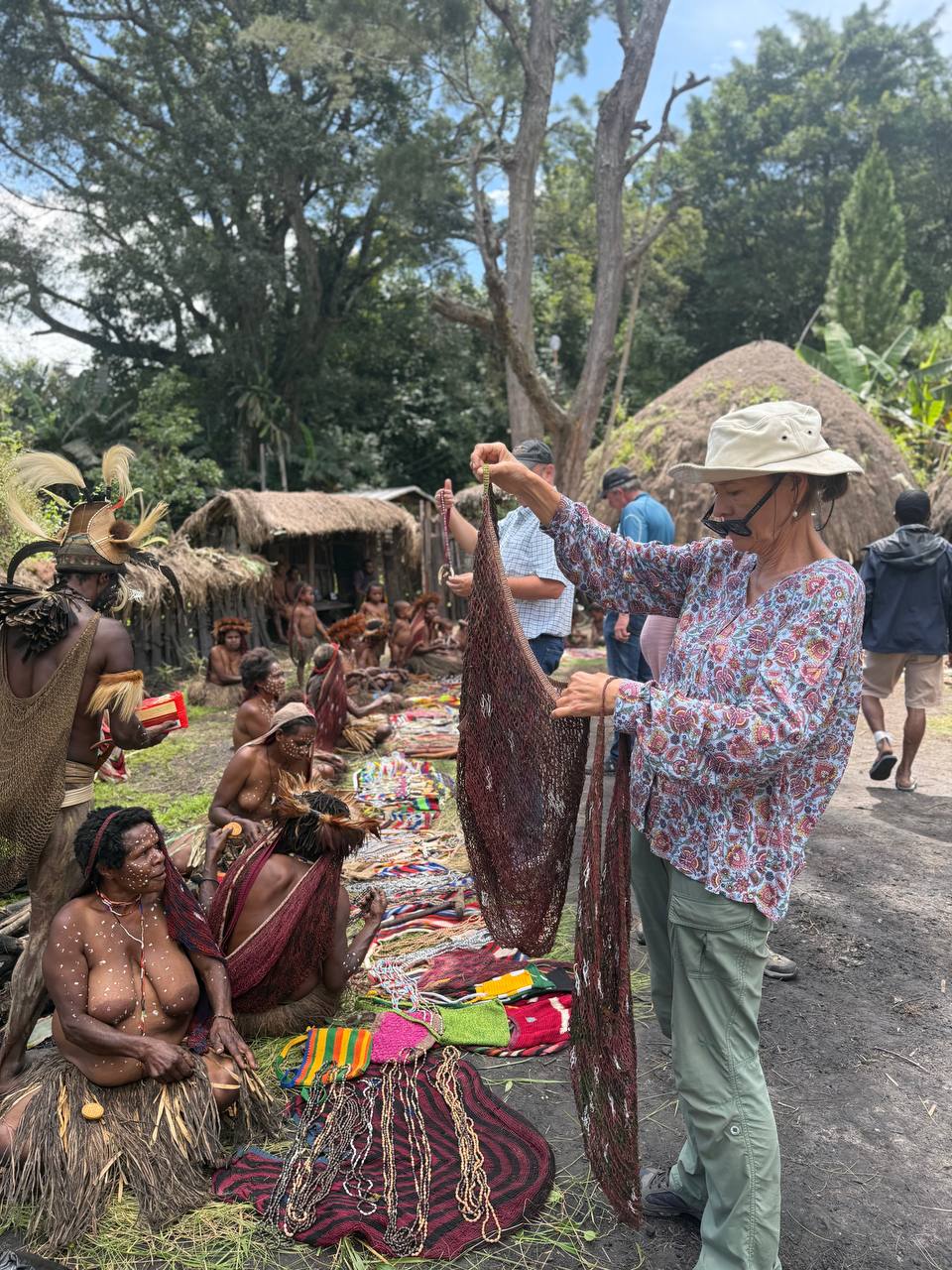

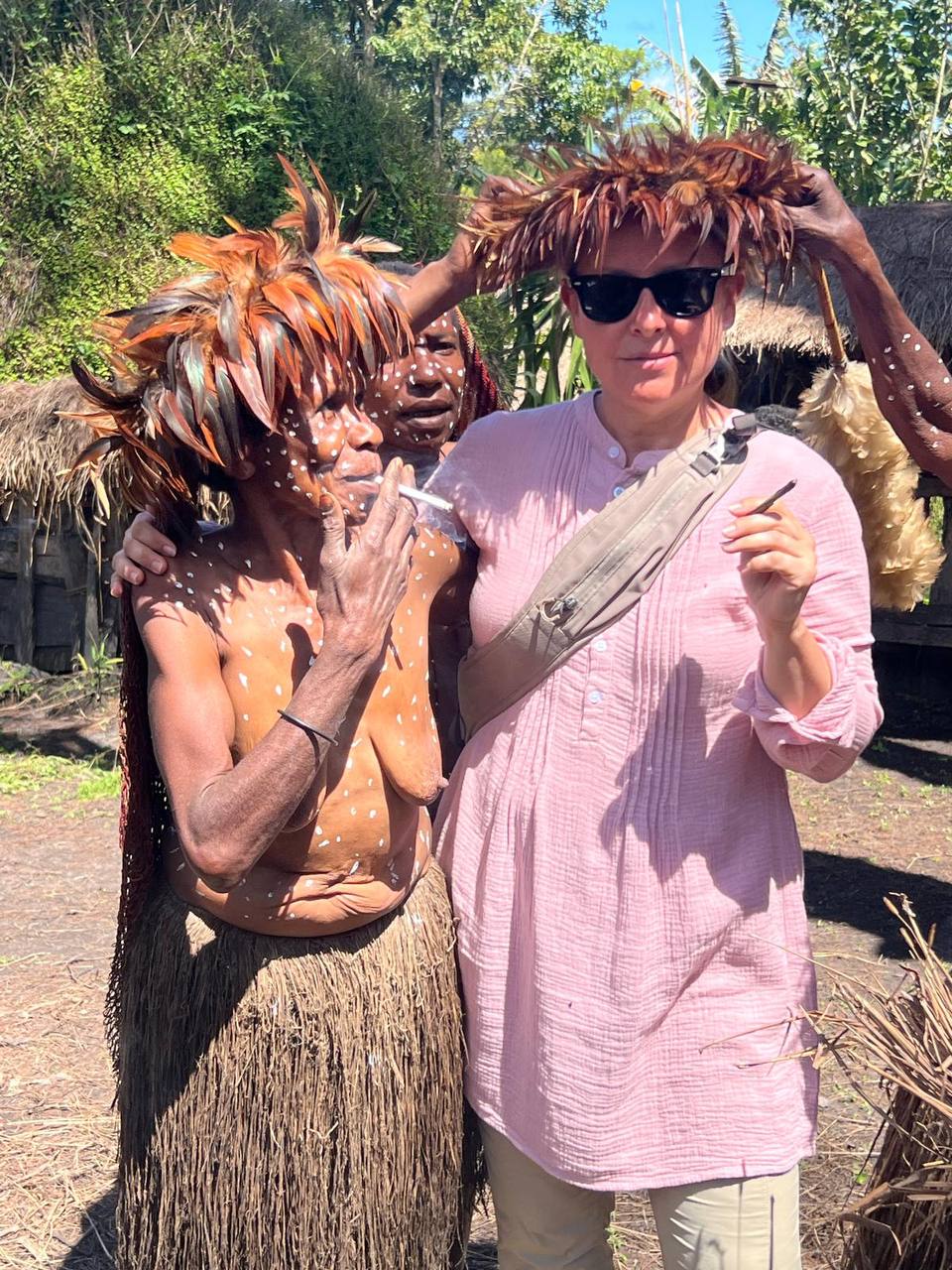

Trekking with the Dani in Wamena
With all this in mind, the main reason people come to Wamena and surrounding areas is to trek through the stunning valleys, jungle, and mountain landscapes, while interacting with the Dani. What makes this experience so powerful is the variety. Some Dani villages are a short drive from Wamena, others take hours to reach on foot. This creates a kind of time warp where you’re literally walking from one version of the Dani world to another.
You’ll see people living off the land, farming manually, raising pigs, and going about their lives in a manner that feels like a world away from city life. You’ll also see just how tough things can be. Many villages lack electricity. Medical care? Rare at best. Schools? Sometimes a blackboard and some chalk. That said, it’s real. I’ve had guests moan that “the villages aren’t authentic,” but this is the Dani in 2025, a people caught between the modern world and something much older, and trying to figure out where they fit in a Javanese dominated world.
Our trips are led by local Dani guides, and that makes all the difference. You’re not just wandering through someone’s backyard with a camera, you’re being brought into a story that they’re still writing.
Seeing a mock battle and eating Mumu
One of the highlights of most trips is visiting a Dani village that puts on a bit of a show. This is part performance, part ritual, and part tourism, but still completely worth it. The men don their traditional regalia, spears, kotekas, and all, and engage in a mock battle to welcome you. It’s loud, intense, and oddly beautiful.
After the “battle,” the women greet you, often bare-breasted, and demonstrate skills like fire-starting using friction. You’re then invited to buy handicrafts—yes, you can buy penis-gourds, and yes, they come in all sizes.
Then comes the Mumu. This is the traditional feast, cooked underground using hot stones. Pigs (if you’re lucky), chicken (if you’re not), sweet potatoes, taro, and mountain greens are buried and slow-cooked in a pit. The pig, if it’s on the menu, will be killed in front of you, usually with a bow and arrow, which is infinitely more humane than what you’ll see in places like Mount Hagen in PNG, where they get literally bludgeoned to death.
The food is simple but excellent, and it’s all part of a broader experience, one that is both ceremonial and shared.
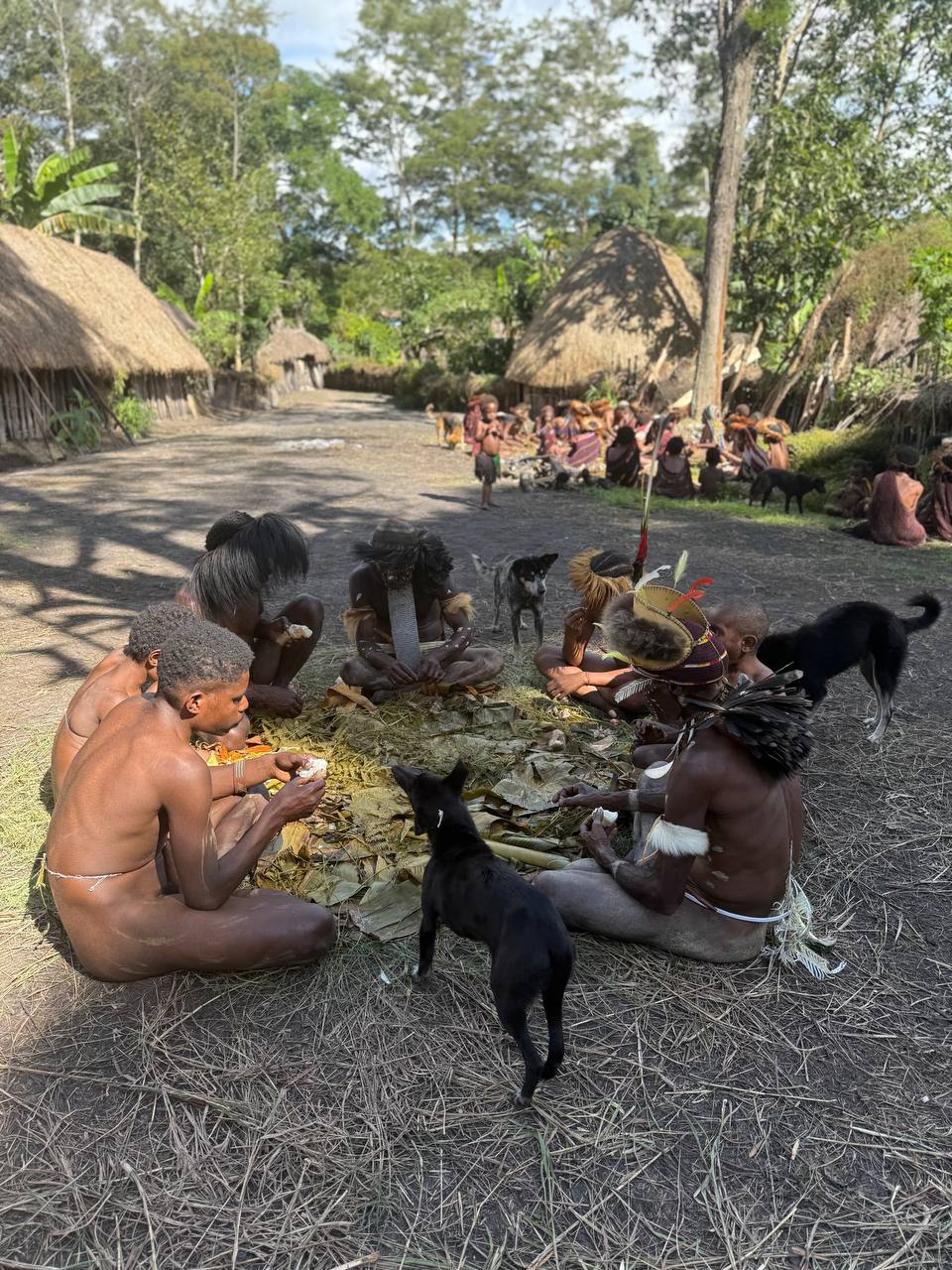

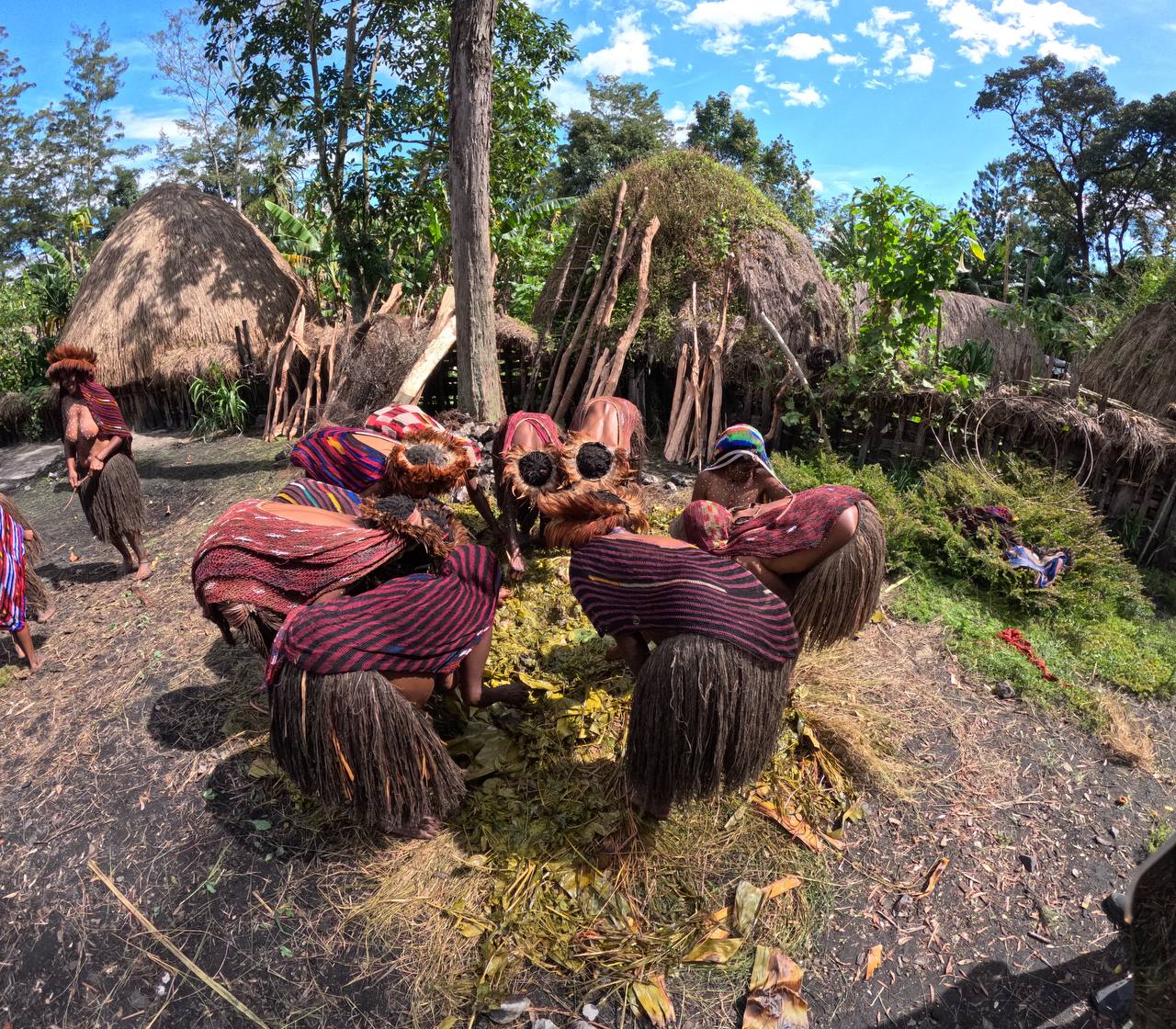

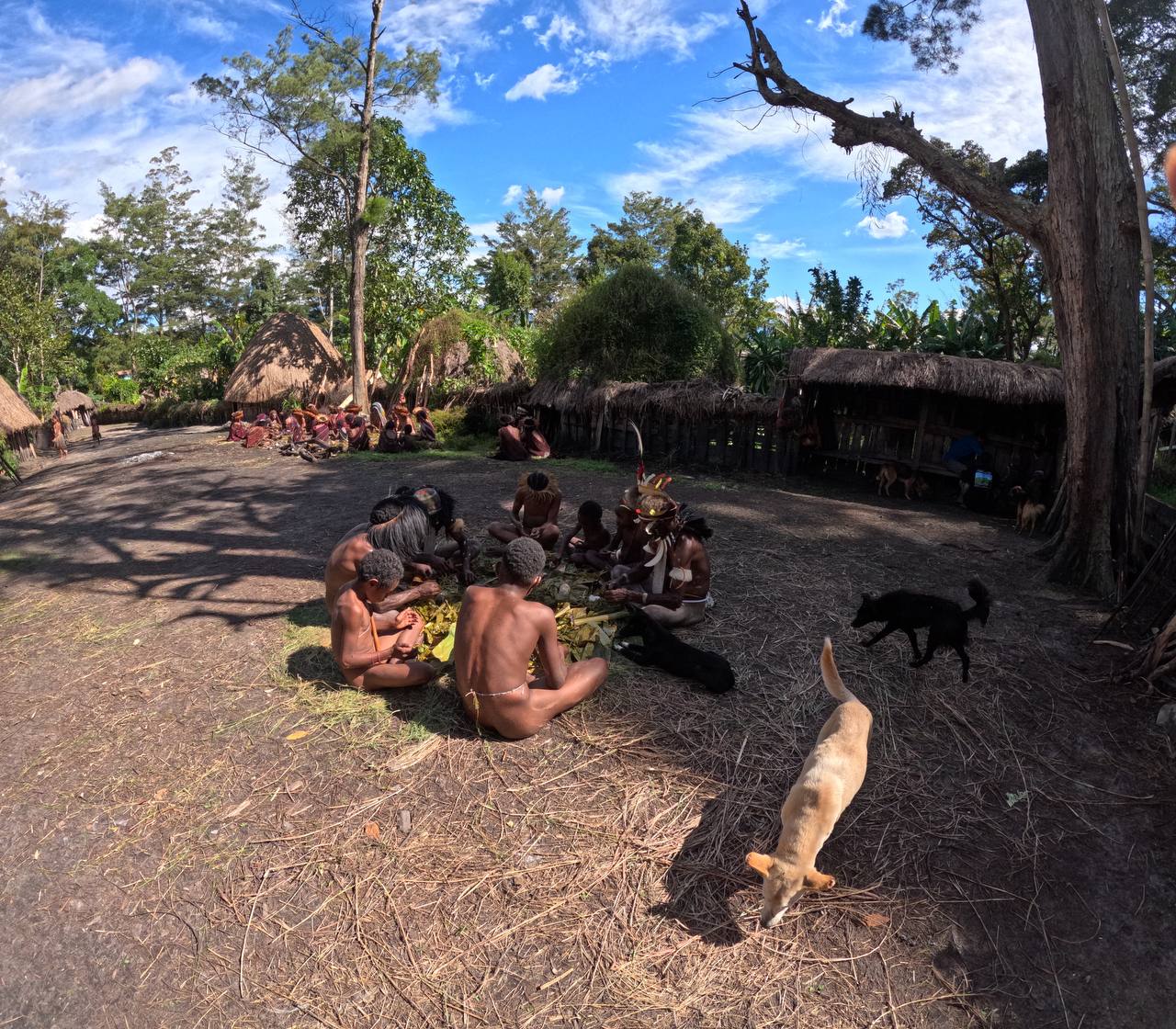

The Dani and the West Papua Crisis
It’s impossible to travel through West Papua and not feel the tension. Wamena, in particular, has seen repeated flare-ups of violence between Papuans and Indonesian military forces. Just before our last trip, the area was under lockdown after clashes resulted in the deaths of at least two Indonesian soldiers. Officially, none of this was reported, but was instead relayed to us by local sources.
While YPT always remains politically neutral, it’s impossible not to be moved when you hear the stories, see the scars, and see people wearing the banned Morning Star flag.
For the Dani, Indonesia is a foreign occupier. Their culture, language, and rights have been steadily stripped away under Javanese rule. You’re not just trekking through a beautiful landscape, you are in an area of active resistance.
Tips for Trekking With the Dani
Bring cigarettes. Really. They act like currency, and handing out a smoke is a great icebreaker. Don’t overdo it, but a few packs of Gudang Garam go a long way.
Ask before taking photos. Always. The Dani are not zoo animals, and they are currently living through a conflict, so show some respect. The best experiences come from talking, not snapping.
Buy some handicrafts. They’re cheap, and your money goes straight into the village. Don’t haggle like it’s a Bangkok market just pay a fair price and support the locals.
Be prepared for basic conditions. You’ll be hiking. You’ll be sleeping rough. And you’ll probably eat more chicken than you ever thought possible. But it’s worth it.
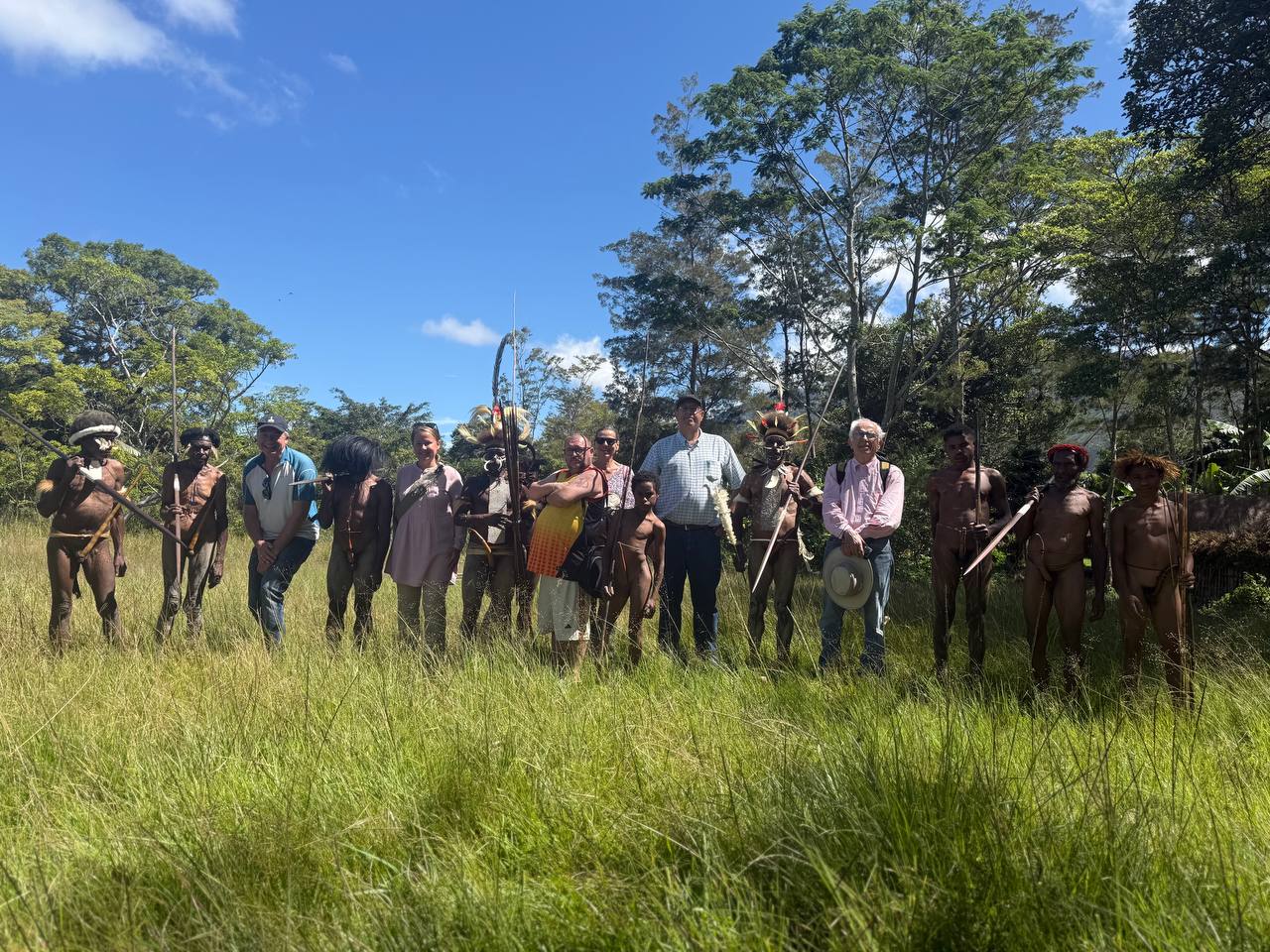

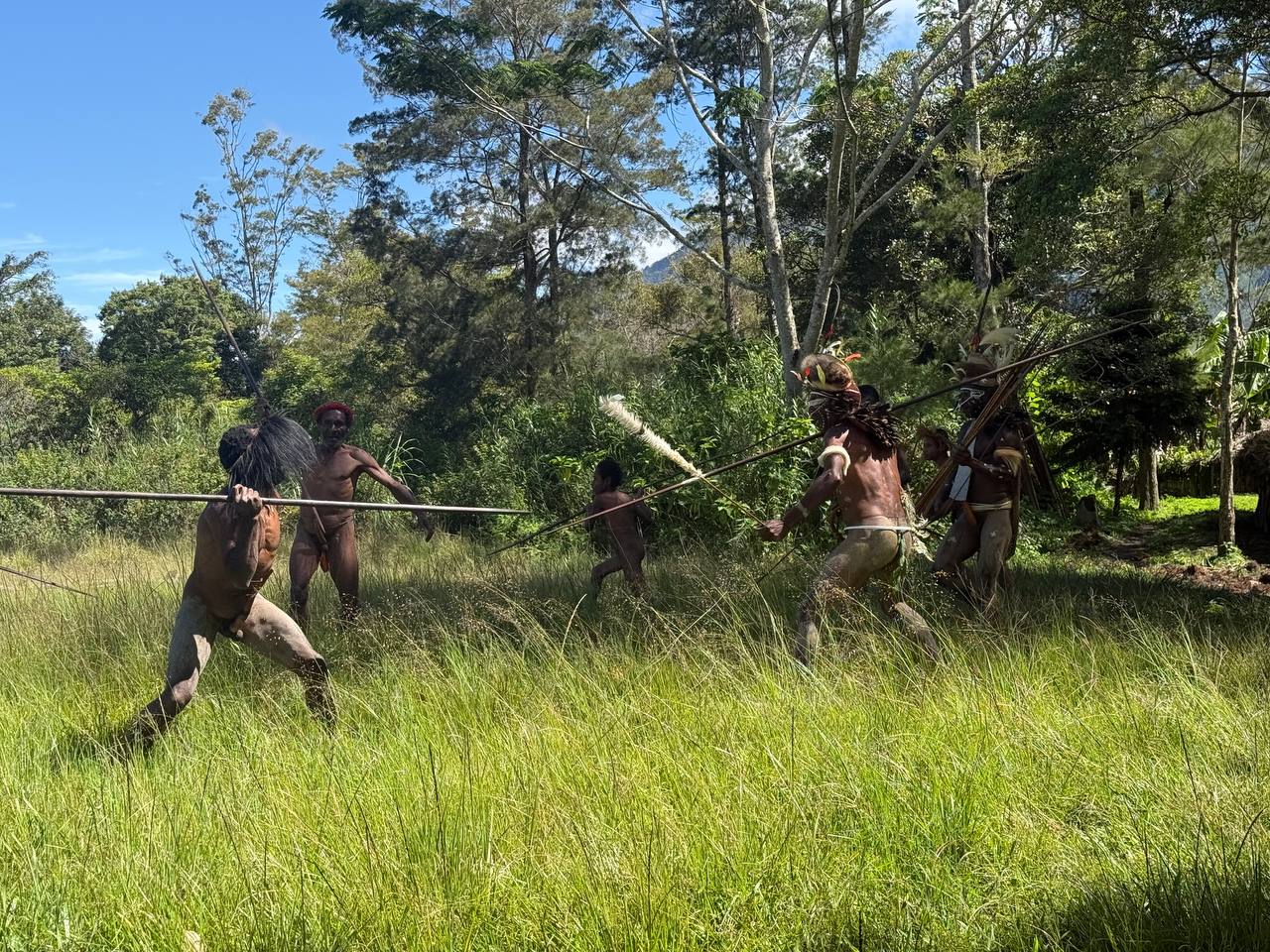

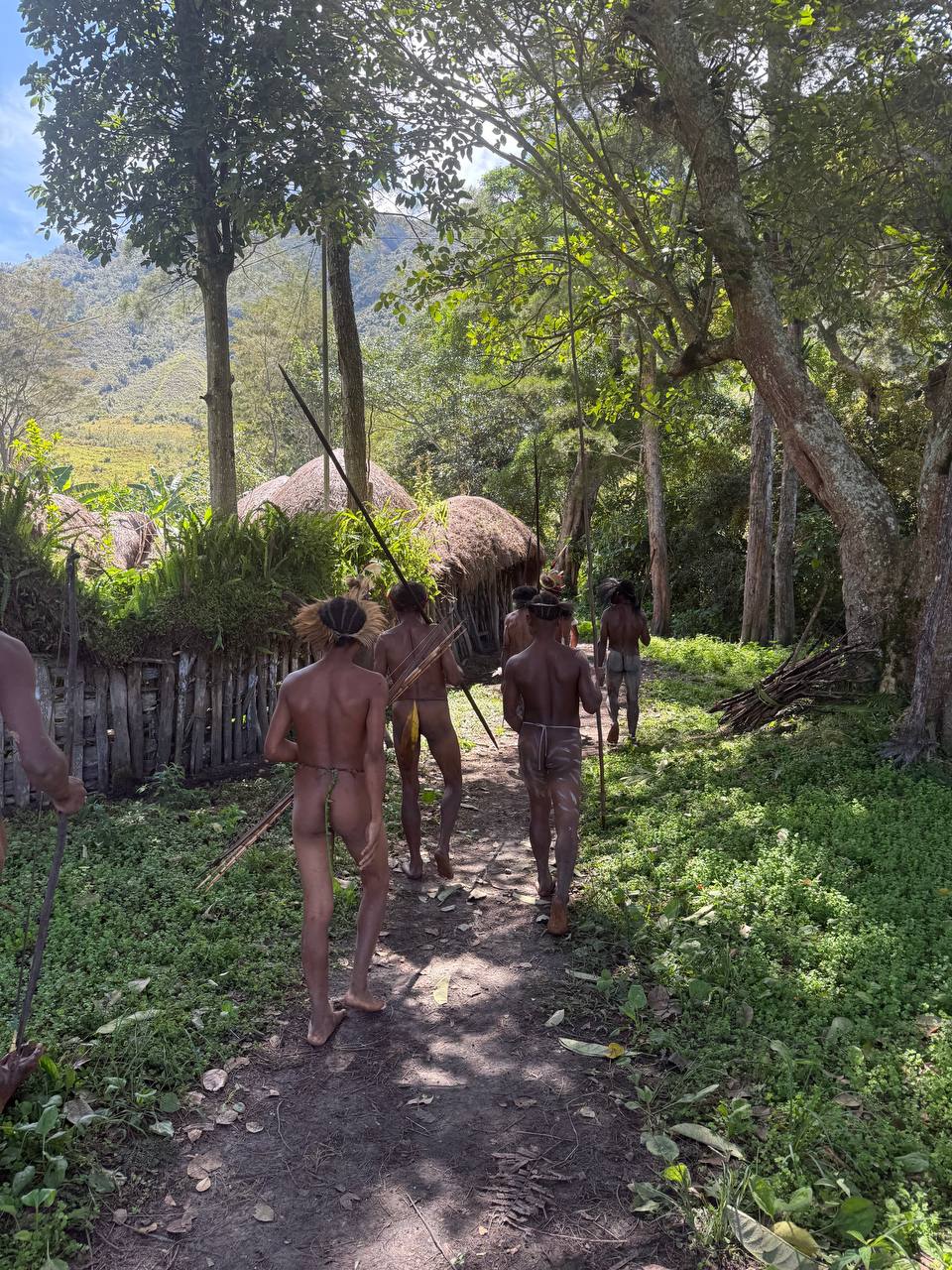

Conclusion
Trekking with the Dani isn’t just about scenery, it’s about stepping into a world that’s rapidly changing and catching glimpses of traditions that stretch back centuries. You’ll eat, walk, talk, and sweat with some of the most fascinating people on earth. And if you do it right, you’ll gain a lot more than just some cool pictures. You do though have to be open minded enough.
Click to check out our West Papua Tours.



